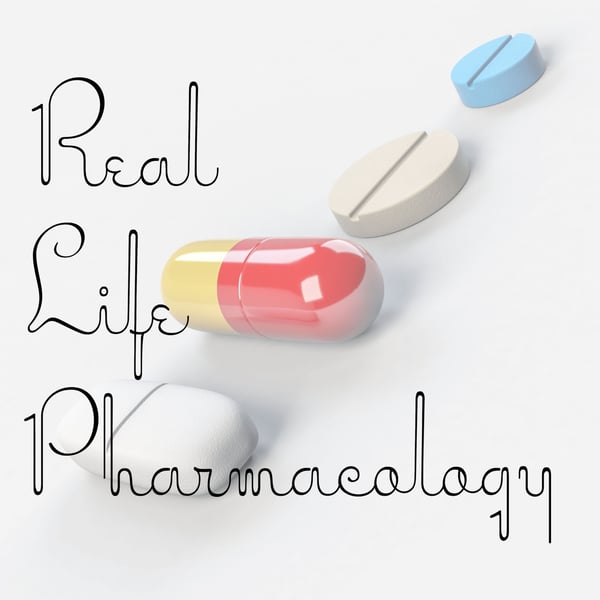Darifenacin Pharmacology Podcast – Episode 308
Real Life Pharmacology - Pharmacology Education for Health Care Professionals
Eric Christianson, PharmD; Pharmacology Expert and Clinical Pharmacist
5 • 716 Ratings
🗓️ 4 January 2024
⏱️ 13 minutes
🧾️ Download transcript
Summary
CYP3A4 and CYP2D6 are important enzymes in relation to darifenacin. I breakdown the importance of these enzymes and how they can impact drug therapy.
Darifenacin has anticholinergic activity but affects the central nervous system less than other agents in its class such as oxybutynin and tolterodine.
Darifenacin's pharmacology is selective for the Muscarinic-3 (M3) receptor in bladder tissue which helps reduce the risk for CNS adverse effects.
Transcript
Click on a timestamp to play from that location
| 0:00.0 | Hey all, welcome back to the Real Life Pharmacology podcast. |
| 0:03.5 | I'm your host, pharmacist Eric Christensen. |
| 0:05.6 | Thank you so much for listening today. |
| 0:08.2 | As always, go check out real life pharmacology.com. |
| 0:11.4 | We've got that free 31 page PDF. |
| 0:14.4 | It's a no-brainer top 200 study guide. |
| 0:17.2 | I lay out some of the most important things that you're likely to be tested on in pharmacology |
| 0:22.2 | courses and board exams and so on and so forth. So simply an email. We'll get you access to that. |
| 0:29.6 | All right. So the drug of the day today is Darifenison. Brand name of this medication is Ennablex. |
| 0:36.7 | This is an anticholinergic agent used in the management of |
| 0:42.6 | overactive bladder. Dosing of this medication is usually just once a day. It is an extended |
| 0:51.7 | release formulation, usually 7.5 milligrams once a day and then can be increased after a couple weeks if needed, up to 15 milligrams once a day. |
| 1:04.0 | Important to note it being extended release with the administration, it's definitely not recommended to crush or chew this dosage |
| 1:14.7 | form. So if it's too big or you've got a patient with swallowing difficulties, you better |
| 1:21.7 | recognize that we may need to switch to an alternative medication, alternative anticholinergic, if that's the class we're looking to use. |
| 1:31.3 | So something like Tolteridine, for example, or oxybutinin, those type of medications there. |
| 1:39.5 | Digging deeper a little bit into the mechanism of action, so how do anticholinergic agents help over active |
| 1:47.0 | bladder? Well, the specific receptor is the M3 receptor, also known as the muscarinic receptor. And what |
| 1:57.8 | Derophonisinin does is it's an antagonist or it blocks the M3 receptor, |
| 2:03.6 | and this prevents acetylcholine from binding to that receptor |
| 2:09.3 | and ultimately activating that receptor. |
| 2:13.1 | So this blocking or the prevention of acetycholine binding there, |
... |
Please login to see the full transcript.
Disclaimer: The podcast and artwork embedded on this page are from Eric Christianson, PharmD; Pharmacology Expert and Clinical Pharmacist, and are the property of its owner and not affiliated with or endorsed by Tapesearch.
Generated transcripts are the property of Eric Christianson, PharmD; Pharmacology Expert and Clinical Pharmacist and are distributed freely under the Fair Use doctrine. Transcripts generated by Tapesearch are not guaranteed to be accurate.
Copyright © Tapesearch 2025.

